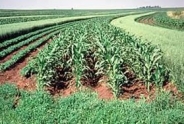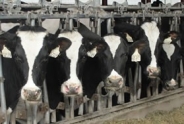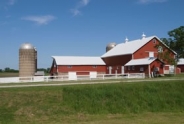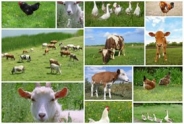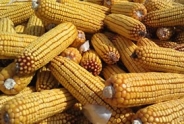A Representative Soil Sample Makes All The Difference
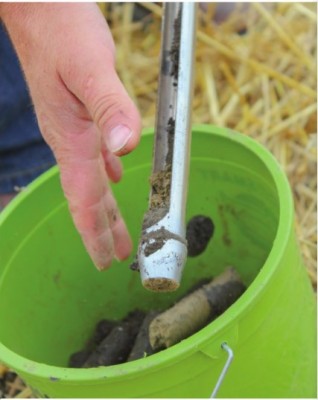
By Scott Fleming: Rock River Laboratories LLC
Every state in the U.S. shares a bulletin discussing how to pull a proper soil sample. In Wisconsin, that bulletin is known as extension publication a2100. This scientific publication sums up soil sampling in four short pages. The first paragraph states, "An acre of soil to a 6-inch depth weighs about 1,000 tons, yet less than 1 ounce of soil is used for each test in the laboratory." That number is quite staggering. Then to think, at a minimum, we are pulling one sample every five acres. That means we are trying to pull one soil sample to represent 10 million pounds of soil. Therefore, pulling a high-quality soil sample is important every time we hit the field. Here are a few tips for accomplishing just that to round out a successful 2021 crop season.
Avoid outliersThe key to getting a representative sample is just like it sounds - to make the sample represent the sampled area. This sounds simple but can get complicated when physically in the field. Many field features can pose challenges to the ideal representative sample. Current or removed fence rows, dead furrows, headlands and point rows can all add unwanted variability to a soil sample. Other areas of concern are man-made - such as manure or lime piles. Eroded or low areas should not be sampled unless these areas are large enough to warrant managing separately from other areas. As a reminder, soil samples should always represent what is in the field; take care to only sample areas of the field that are not outliers.
DocumentationDocumenting where soil samples originated can save a lot of confusion when it's time to make fertilizer decisions. It may seem easy to remember how you sampled fields at the time of sampling, but when the data is reviewed those memories may fade. Another area that may require documentation is noting things that may change your soil test values, such as abnormally dry soil moisture, manure or fertilizer application, or tillage prior to sampling. All these events could possibly create variability and unexpected soil test results. This type of documentation is especially important when reviewing samples after two or three resampling events.
DepthPulling soil samples in the proper location will mean nothing if they are not pulled from the correct depth. My recommendation is when using a chisel plow tillage system, samples should be pulled at 2/3 of the tillage depth. This is generally 7 inches deep for most growers. Even though there is a target depth, samples could still get pulled too shallow or too deep. This is likely due to poor equipment or improper use. A shovel can be used to collect a soil sample, but it is best to use a soil probe.
Soil probes can be purchased for around $200. A local agricultural retailer or agriculture agent may also have a probe to loan out. Even with a soil probe, it is possible to pull a sample at the incorrect depth. Use a tape measure to establish your probe's maximum depth. It is also a great idea to mark your probe at the proper sampling depth if this is less than your probe's maximum depth.
Ask for helpSoil sampling is one of the least expensive and most important things that can benefit a farm. Several resources exist that can assist to achieve proper soil sampling. Start simple by searching state extension or land-grant university webpages for resources. A soil testing laboratory can be another great resource. Most laboratory webpages have their own soil sampling guides or links to university resources. However, online and print resources can only help so much. If questions arise that cannot be answered by such resources, experts like a local agriculture agent or fertilizer supplier can provide hands-on assistance. If too much soil sampling research leads to an analysis paralysis, these in-person resources can also help by pulling the samples. There is no shame in hiring an expert to pull quality, representative soil samples that provide accurate data in the long run.
Upcoming Events
WNY Pastureland Conversion & Soil Health Field Day
July 16, 2025
Middleport, NY
Join American Farmland Trust for the Western New York Soil Health Field Day on July 16, 2025, at Zeliff Farm in Middleport, NY, from 9:00 AM-3:15 PM. Learn about pasture conversion, soil health benchmarking, biochar in grazing systems, and best grazing practices. Plus, enjoy hands-on demos with the NY Soil Health Trailer, drones, and cover crops! Check out the attached agenda for more information about the field day and REGISTER HERE. Zeliff Farms is a regenerative beef operation who has recently partnered with AFT on outreach and education to farmers including learning circles and evaluating biochar effects on soil health.
IPM Strategies to Protect Corn and Soybean Seed in NY
July 30, 2025
Hamburg , NY
SWNYDLFC and Cornell IPM are hosting a grower meeting to discuss integrated pest management strategies for protecting corn and soybean seed in New York.
FAMACHA Training for Sheep and Goat producers in Woodhull NY
August 13, 2025 : FAMACHA Training in Woodhull
Woodhull, NY
Join us for a discussion and hands-on training for internal parasite integrated pest management in sheep and goats. Certification is available to all students participating in the workshop.
Announcements
No announcements at this time.

